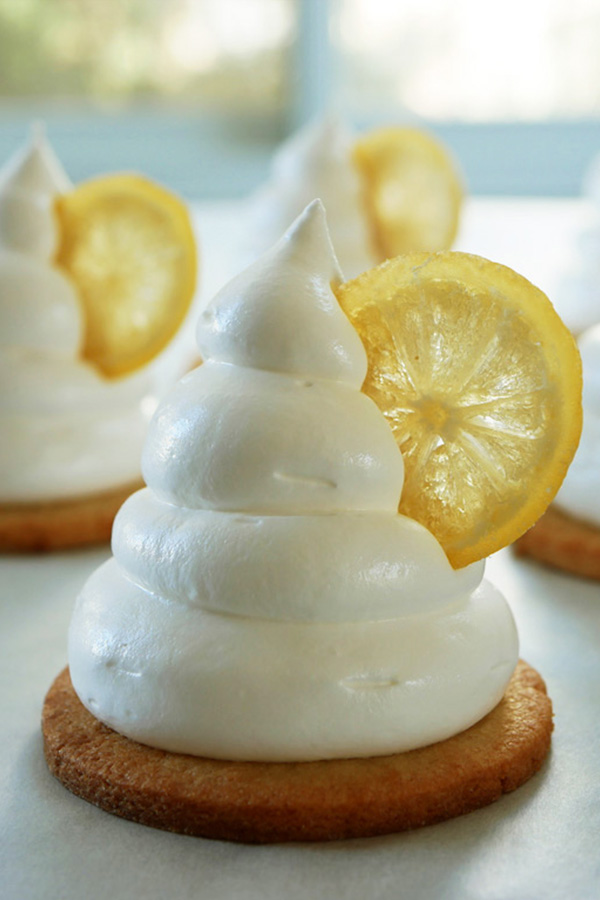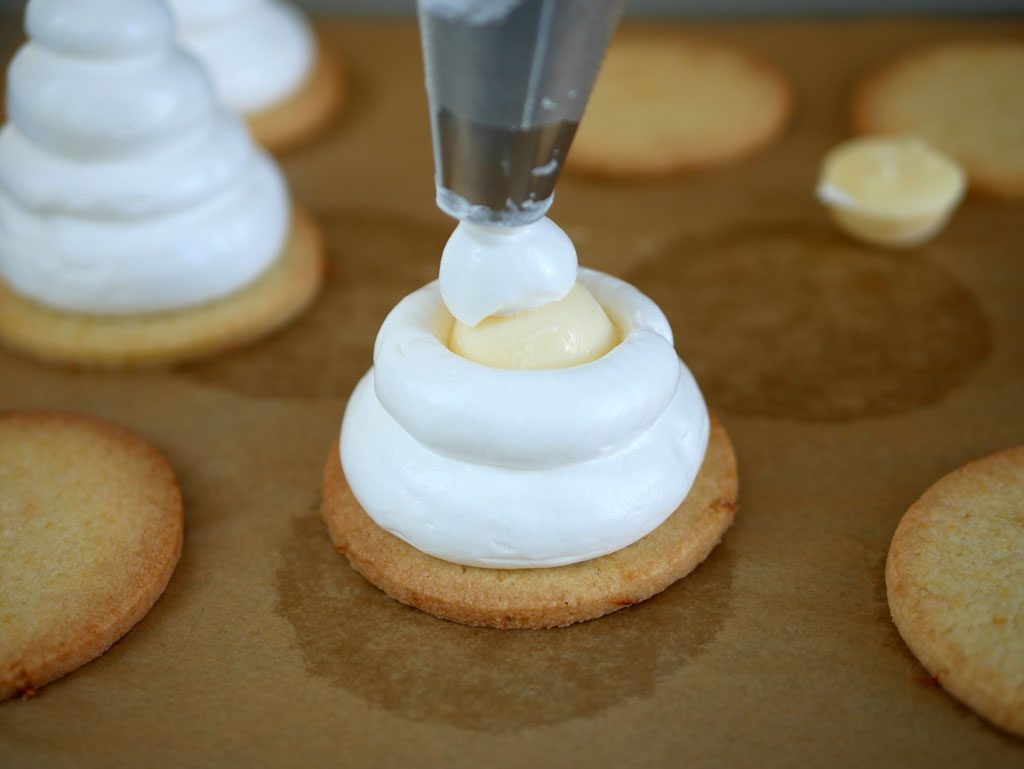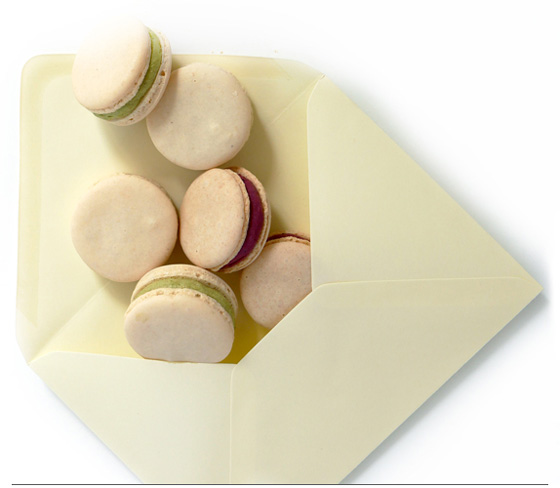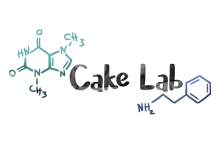Lemon Crembo


Last week, Lauren & her family came to visit Jerusalem. They used to be very close neighbors once upon a time. When we met I asked Dekel, one of the kids, if he’s enjoying his trip. He said he’s having a lot of fun here, but is bummed that Crembo isn’t sold here during summer. An idea came to my mind. I went straight back home to the kitchen and started making Crembo as a little surprise for his visit the next day. He was happy, and so was I.
For me, Crembo, a local treat, symbolizes the beginning of winter. More than the evening darkness that starts creeping earlier and earlier. More than the first drops of rain. Still, I wanted a Crembo that would make me happy in summer too. That’s why I decided to make a refreshing and summery Crembo. And what’s more refreshing than lemon? I added lemon zest to the cookie, I added lemon juice to the meringue, and I hid lemon cream in the heart of the Crembo.
I also decorated the Crembo with a slice of candied lemon I bought in the market. At first I thought about making the candied lemon myself, but when I realized that the process could take about two weeks, I gave up and just bought them. Oh, and another thing. This Crembo is relatively large compared to the classic one. It’s recommended to eat it with a spoon.
* The recipe makes about 10 large Crembos.






Lemon Cream
50 g lemon juice
70 g sugar
55 g eggs
Zest from 1 lemon
90 g soft butter
Cookie
200 g flour
100 g powdered sugar
Pinch of salt
Zest from 1 lemon
80 gr cold butter (cut into cubes)
40 g egg yolk
10 g water
Lemon Meringue
70 g water
200 g sugar
90 g egg white
10 g lemon juice
Decoration
About 10 slices of small candied lemon
Equipment
Round cookie cutter, 7 cm diameter
A pastry bag fitted with a 16 mm smooth tip
A silicon mold of half-spheres, 3 cm diameter each
Lemon Cream
Put lemon juice, sugar, lemon zest and eggs in a saucepan and whisk. Start warming on medium heat, while whisking all along to prevent the egg yolk from congealing. Once it starts to boil, remove from heat and pour the mixture through a sieve into a measuring pitcher.
As soon as the temperature reaches 50 °C (120 °F), add the soft butter (gradually but quickly) and mix well. Grind with a hand blender to a uniform consistency. Pour the cream into 20 cavities in the silicone mold and keep in the freezer for at least two hours.
Cookie
Put flour, powdered sugar, salt, lime zest and butter cubes in the mixer bowl and keep in the fridge for about 10 minutes. Remove from fridge. Using the paddle attachment, start mixing at low-medium speed until the batter reaches sand-like consistency. Make sure the butter chunks are as small as possible at the end of the process without melting the butter.
Add egg yolk and water all at once and keep mixing at medium speed until the dough starts to form but is not yet completely uniform. Remove dough parts from the bowl and combine. Cover dough with plastic wrap. Roll out the dough a little bit. Keep in the fridge for at least an hour.
(In a cool room) Flour the work surface, place the dough on top and dust it with flour as well. Roll out the dough with a rolling pin. Keep turning the dough throughout and make sure it doesn’t stick to the surface. Roll out the dough to a 3-4 mm thickness.
Please note (!) If at any point the dough starts to soften, put it back in the fridge until it is stiff again.
Using a round cookie cutter, cut out circles from the dough and place them on a baking tray lined with parchment paper, each circle 2 cm apart (they don’t expand much during baking).
Keep in the freezer for about 10 minutes and preheat the oven to 170 ºC (340 ºF) in the meantime.
Remove the cookies from the freezer and transfer them to another baking tray. Place the tray in the oven and bake for about 15 minutes or until the edges begin to brown. Remove from oven and cool at room temperature.
Lemon Meringue
Put water and then sugar in a saucepan. Place on medium heat. Stir the sugar with a spatula to dissolve it. Once the water starts to boil, stop stirring and remove the spatula. Let the syrup boil and check with a thermometer that the temperature does not exceed 115°C (240°F).
While it’s boiling, whisk the egg whites in a mixer on medium speed. When the syrup reaches 105°C (220°F), increase the speed of the mixer so the egg whites get to soft peaks (white foam consistency).
As soon as the syrup reaches 115°C (240°F), turn off the stove, reduce the mixer speed to medium, and slowly pour the syrup into the mixer. Increase the mixer speed to high and continue to whisk for about 10 minutes, until the meringue cools. Towards the end, add the lemon juice and keep whisking.
Putting it all together!
Fit a pastry bag with a 16 mm smooth tip and fill it with the meringue. Pipe a first layer of meringue in the center of each cookie. Release a half-sphere of lemon cream from the silicone mold (keep the mold in the freezer while working). Place the lemon cream on top of the meringue layer, flat side up, and push it down gently.
Pipe a second layer of meringue on top. Release another half-sphere of lemon cream from the silicone mold. Place it on top of the second meringue layer, flat side down, and push it down gently. Pipe a third and a fourth layer of meringue on top.
Keep in the fridge in an airtight container for about two days (or more if kept in the freezer). Before serving, remove from the fridge and decorate with a slice of candied lemon. It’s better to let them sit at room temperature for about 20 minutes before eating.

Related Posts
2 Comments
Leave a reply:Cancel reply

Search the blog
![]()
Get updates by email














55 g of eggs? C’mon who the hell knows what that means? How about 2 large eggs or something to that effect? For this reason alone I’m not making this recipe because I don’t have a scale to deal with this.
Hi Nancy, thanks for your input. I usually work with a scale because this is how you achieve the most accurate results. I recommend using one for most baking recipes.